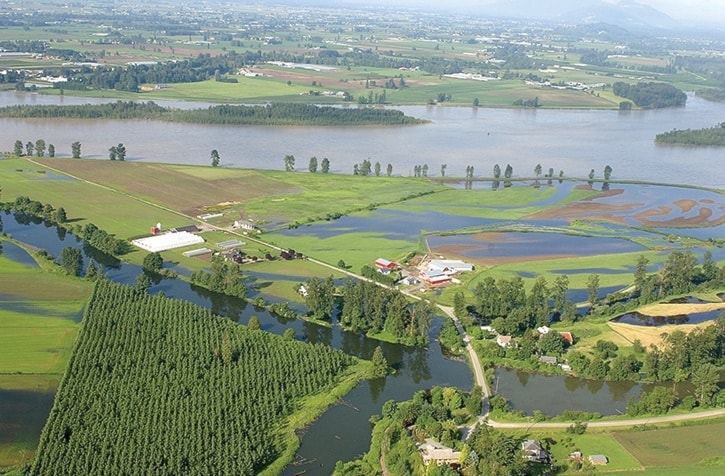Senior governments need to invest more money on work to protect communities along the Fraser River against potential flooding, not more studies, said Mission Mayor Ted Adlem this week after the Fraser Basin Council (FBC) released its Lower Mainland Flood Management Strategy initiative, which aims to pull together a coordinated action plan with costs within two years.
“We know where our issues are and we know where work needs to be done,” said Adlem. “We don’t need more studies … The whole thing has been studied to death.”
Areas that need improving in Mission are the Mission Dike from the Harbour Authority building on Harbour Avenue to the West Coast Express staging area and the Silverdale Dike.
There is no right-of-way for the district to improve the Mission Dike, and the Silverdale Dike, a non-standard agricultural berm, would also require several million dollars in land acquisition and construction to bring it up to the required standards, according to a district staff report prepared by director of development services Mike Younie earlier this year.
Younie also noted work needs to be done to raise the Lane Creek and Chester Creek pump stations.
In addition to elevating the dikes, governments also need to dredge the river, said Adlem.
“If we don’t do something about dredging the river, which is rising, and if we study the river again, which we already know where the problems are, we’re never going to accomplish a safe river or safe dikes,” he added. “The biggest issue is where is the money going to come from?”
In April, Mission council refused to provide more funding to the FBC for plan development. Mission already contributed $6,426 this year to FBC work through the Fraser Valley Regional District. According to a district staff report, $1,875 of Mission’s contribution was used to help fund the strategy.
FBC chair Colin Hansen said a prioritized strategy of what flood defence works are needed most urgently would guide spending. FBC predicts a catastrophic flood could put 300,000 residents and $50 billion in development at risk on the Fraser River floodplain.
It’s unclear how the billions of dollars in needed work will be raised, but advocates hope a regional approach will prove more logical than leaving individual municipalities to work in isolation on flood planning and lobbying for grants.
A blueprint for deliberate, planned upgrades would aim to avoid a repeat of 2007, when the Fraser threatened to flood and politicians frantically dispatched hundreds of dump trucks to raise dikes as an emergency action.
“We did not know whether we were putting those dump truck loads in the most important places or not,” Hansen said. “We threw money at the problem on an urgent basis. We need to make sure taxpayers’ dollars are spent effectively, targeting the highest risk areas first and dealing with the secondary concerns as we go forward.”
Part of the case for a regionally agreed strategy is because flood water pushed back in one area will flow to another.
Just building higher dikes in the Fraser Valley could simply direct more water at Richmond, Hansen said.
Dikes are sometimes maintained by different municipalities on either side of a river – such as the Pitt River between Coquitlam and Port Coquitlam. If just one side is built higher to new standards, the other side would flood first in high water.
Federal and provincial ministers pledged support, noting a Fraser flood has the potential to be the worst natural disaster in Canadian history.
Also backing the plan was Sto:lo Grand Chief Doug Kelly, who said aboriginal communities’ pleas for help during floods in 1989 and 1990 were mired in “jurisdictional warfare” between the provincial and federal governments.
Adding to the sense of urgency are new reports released by the province last week that project major floods will be more frequent and severe as a result of climate change, and warned most dikes in the Fraser Valley are not high enough.
– with Jeff Nagel files
